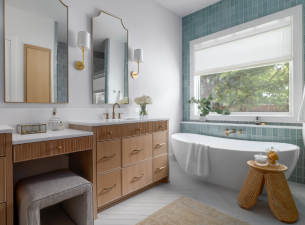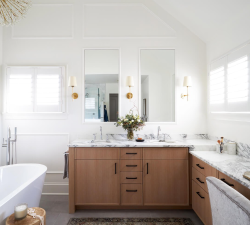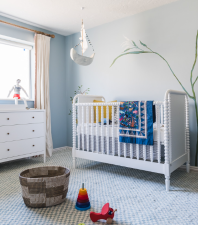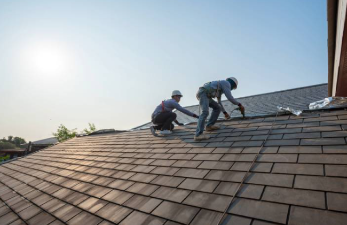Bathroom Renovation Mistakes to Avoid
The bathroom is the most frequently used room in the home, and it's also the most prone to renovation mistakes.
If it's not done right, it can lead to numerous problems down the road: leaks, odors, water accumulation, mold... These problems not only impact your quality of life but may even require demolition and reinstallation, which is both costly and time-consuming.
Waterproofing applied, but still leaking?
Most people know waterproofing is necessary, but they don't know the key details of waterproofing:
Hollows, cracks, or sand on walls and floors can cause leaks even with thickly applied waterproofing.
The right approach: Before applying waterproofing, prepare the base layer to ensure it's solid, flat, and clean. Round all corners, fill the base of pipes tightly with sealing material, and then apply a waterproof reinforcement layer. Tips:
- Apply waterproofing at least twice, one horizontally and one vertically, with a minimum thickness of 1.5mm.
- The waterproofing height should be at least 1.8m in the shower area and at least 30cm in the dry area.
- After waterproofing, a 24-hour closed water test must be performed, with the water level at least 3cm.
- Install a sill at the door to prevent water from seeping in.

Choosing the wrong floor drain can lead to odors and blockages
Choosing the wrong floor drain can cause a persistent odor in the bathroom. With so many different floor drains available, how do you choose?
- Deep-sealed floor drains: They are effective at preventing odors, but they drain slowly and are not suitable for showers.
- T-type floor drains: They drain quickly but are generally not effective at preventing odors and require frequent cleaning.
- Flap floor drains: They offer a balance between drainage and odor prevention, but have a relatively short lifespan.
Recommendation:
Choose a T-type or flap floor drain for fast drainage in the shower area, and a deep-sealed floor drain for better odor prevention in the dry area.
The floor drain must be installed at the lowest point in the bathroom to prevent water from accumulating.
Tips:
- Choose a deep-sealed floor drain in the shower area for optimal odor control.
- Choose a T-shaped floor drain in the dry area to prevent the water seal from drying out and failing.
- Avoid overly fancy floor drains; a simpler internal structure is more practical.
Floor drain cores should be replaced regularly, generally every 3-5 years.
Bathroom Outlet Reservation
Smart toilets, heated towel racks, smart mirror cabinets, hair dryers, electric toothbrushes... Modern bathrooms are increasingly equipped with a wide variety of electrical appliances, and insufficient outlet space can be a real bummer.
Required Outlet Locations:
Behind the toilet (35cm from the floor, with a splash guard installed)
Next to the mirror cabinet (30-40cm from the countertop, two reserved)
Location for heated towel racks (depending on the product)
Inside the bathroom cabinet (reserved for use with a smart trash can or other appliances)
Important: All bathroom outlets must be equipped with splash guards. Safety first!
It is recommended to reserve 1-2 more outlets than currently needed to allow for future upgrades.

Poor pipe soundproofing
The sewer pipes are not soundproofed, and every flush from above can be clearly heard, seriously affecting sleep quality.
Correct approach:
- Wrap all sewer pipes with soundproofing foam, at least 2cm thick.
- Ideally, wrap the risers with lightweight bricks for even better soundproofing.
- Install shock-absorbing pads where the pipes meet the wall.
Once this work is sealed, it's difficult to repair, so it's crucial to do it right upfront.
This treatment can reduce noise by over 70%!
Wrong tile selection
Bathroom tiles shouldn't just be aesthetically pleasing; they should also be practical.
Floor tiles: Be sure to choose non-slip ones! Matte finishes and textured tiles are safer.
Wall tiles: Choose glossy tiles for easy cleaning.
Grout: Avoid white cement, as it quickly turns black. Epoxy colored sand or grouting agents are recommended for their mildew and waterproof properties.
Tip: Avoid oversized tiles, as this will hinder the proper drainage slope.
For families with elderly and children, non-slip performance is paramount!


